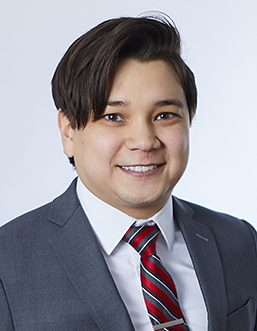On July 14, 2020, Missouri Governor Michael Parson signed into law the Authorized Electronic Monitoring in Long-Term Care Facilities Act. The Act adds twelve new sections to Chapter 198 of the Revised Statutes of Missouri related to the use of authorized and covert electronic monitoring devices in long-term care facilities in Missouri.
An “electronic monitoring device” is defined as “a surveillance instrument capable of recording or transmitting audio or video footage of any activity occurring in a resident’s room.” To be considered “authorized,” such a device must be placed in an open and obvious place. Further, the facility and the Department of Health and Senior Services must be informed about the device. Should unauthorized placement or use of a device occur, the Department and the facility are immune from resulting civil liability.
The Act provides residents of long-term care facilities in Missouri the right to place in their rooms authorized devices owned and operated by the resident once a request is made. The Department will promulgate rules to create an acknowledgement form to be completed and signed by each resident explaining the liabilities, rights, and procedures for use of such devices. The form must be completed and signed by or on behalf of a resident prior to the installation of, or any use of, an electronic monitoring device in the facility. Depending on a resident’s capacity, the individual responsible for entering such a request may shift:
- If a resident has capacity to request electronic monitoring and has not been judicially declared to lack the required capacity, then only the resident may request the authorized electronic monitoring, notwithstanding the terms of any power of attorney or similar instrument;
- If a resident has been judicially declared to lack capacity, then only the guardian of the resident may request electronic monitoring;
- If a resident has been determined by a physician to lack capacity but the resident has not been judicially declared to lack the required capacity, then only the legal representative may request electronic monitoring.
Should another resident reside in the same room as the device, before any use of the device the additional resident will be required to provide consent and execute additional forms to release the facility from civil liability for violations of privacy rights connected to use of the device. A visible sign is required to be posted indicating that the facility, and specifically which rooms, are being monitored by such devices. A facility cannot refuse to admit an individual to the facility, nor shall it remove a resident, because of a request to conduct authorized electronic monitoring. A facility also cannot remove a resident from the facility if unauthorized electronic monitoring is being conducted by or on behalf of a resident.
Residents will be responsible for paying all costs associated with conducting electronic monitoring including installation, maintenance, and use of internet if necessary. Residents will not be responsible for the costs of electricity. The facility should require the device to be installed in a manner that is safe for residents, employees, and visitors.
The law offers protection to facilities and the Department of Health and Senior Services from being civilly or criminally liable for unauthorized monitoring. Further, no facility will be civilly or criminally liable for a violation of the Health Insurance Portability and Accountability Act (HIPAA) or any resident’s rights to privacy arising out of any electronic monitoring conducted pursuant to this new law. With the exception of cases of abuse and neglect, no recording can be released without the written permission of the facility and the resident, or the resident’s guardian or legal representative.
If abuse or neglect of a resident possessing a device under this new law is reported to the facility, and the facility requests a copy of the relevant footage from the device, then the person possessing the footage must provide the facility with a copy at the facility’s expense. A person is required to report abuse based on the person’s viewing of, or listening to, footage only if the incident of abuse is acquired on the footage. An act of neglect should be reported only if it is clear from the footage that neglect has occurred.
It will be a class B misdemeanor to intentionally hamper, obstruct, tamper with, or destroy devices installed or data collected under the new law, or to conduct unauthorized monitoring once a written warning to cease and desist such conduct is provided.
The new law is fairly detailed and addresses the obvious issues (privacy, HIPAA, misuse, etc.) that could occur as a result of the use okf electronic monitoring devices in long-term care facilities. While providing residents with new ways to record and ensure quality of care, the new law also provides facilities and the Department with ample protections from civil and criminal liability should the device not be used under the specific parameters established.
Attached is a link to the bill, now enacted, by Governor Parson: https://www.house.mo.gov/billtracking/bills201/hlrbillspdf/3240H.03T.pdf
The attorneys at Sandberg Phoenix continually track bills as they move through the Missouri legislature. If you have any questions about this Act or any other legislation, please do not hesitate to contact us.
